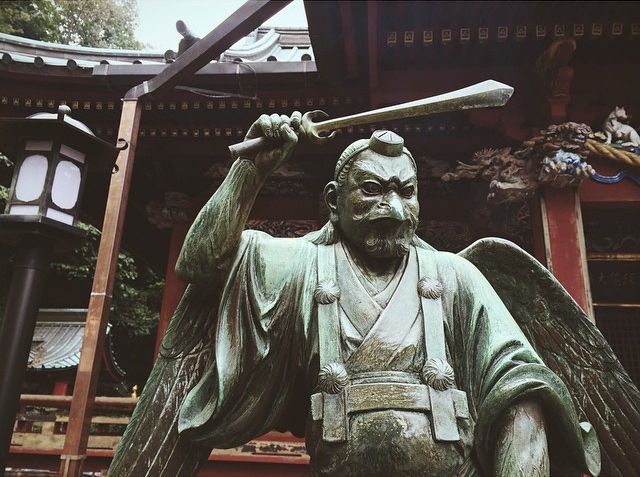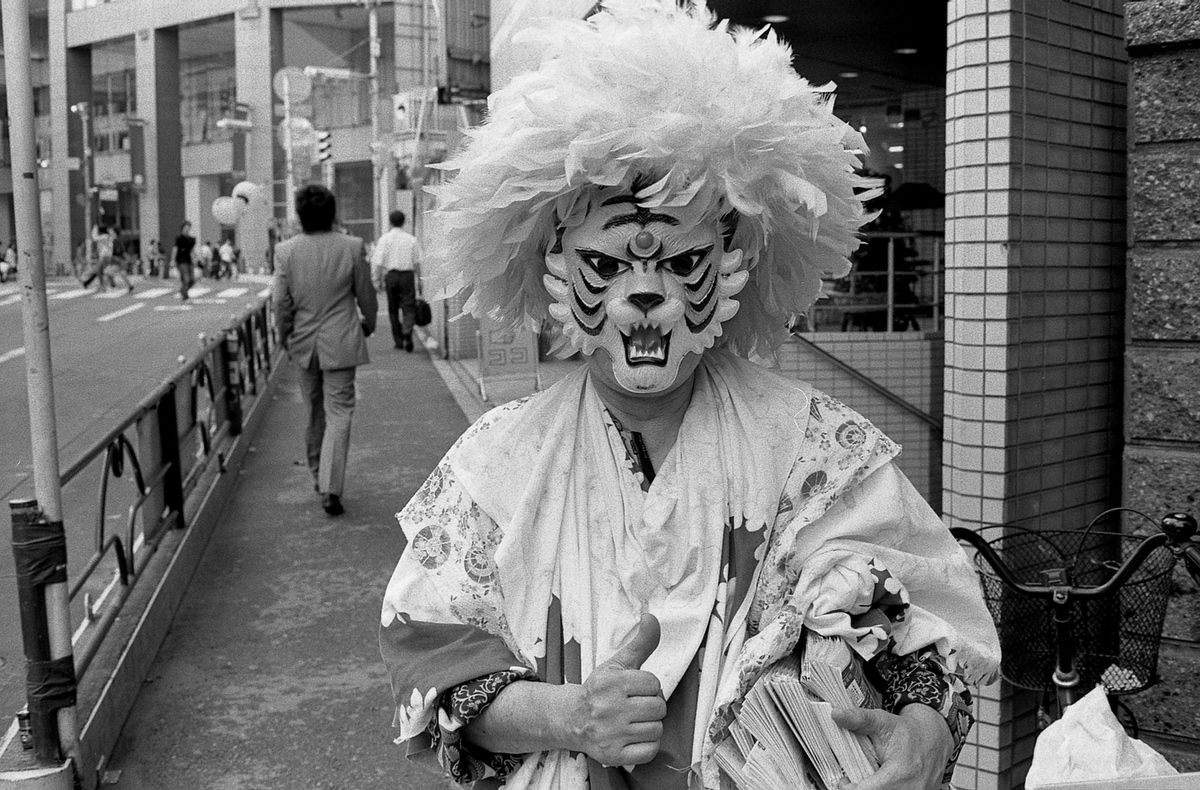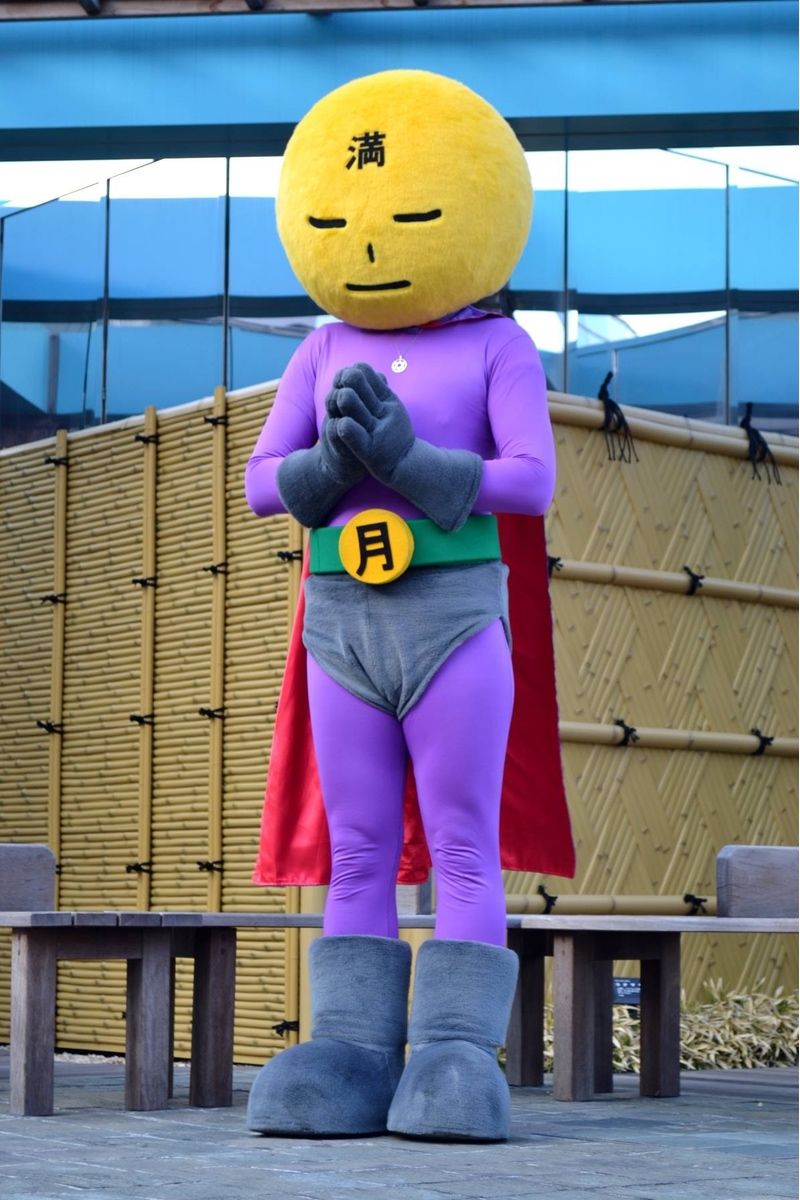
Freak Scene: The Public Life of Japan’s Private Eccentrics
Culture Lifestyle- English
- 日本語
- 简体字
- 繁體字
- Français
- Español
- العربية
- Русский
Every town in every country has its solitary eccentrics, shy and reclusive, but marked by some quirk of behavior or appearance. Their reluctance to interact with others allows elaborate mythologies to arise, often founded on rumor and half-truth, and gradually their fame grows. And in the Internet era, all this can happen very quickly indeed.
Myths Rooted in Fact
Japanese fables are populated by a rich parade of yōkai—nature spirits that often seem to have their origins in allegory or as bogeymen to frighten children into doing as they are told. The akaname will come if you don’t clean the toilet; those who don’t polish off their dinner can expect a visit from the mottainai obake.
 A karasutengu statue, complete with wings and beak. © Sarah Maloy.
A karasutengu statue, complete with wings and beak. © Sarah Maloy.
But among these otherworldly beings are some that arose from the true tales of the stranger at the edge of town. From their garb and their habitat, it has been inferred that legends of the winged, sorcerous, harpylike mountain-dwelling karasutengu stemmed from sightings of yamabushi, ascetic mountain mystics who immersed themselves in nature and the martial arts in pursuit of divinity. And the wizened, child-devouring mountain crone called yama-uba, calling to mind the witch from Hansel and Gretel, is thought to have her origins in a marginalized oddball granny.
Embracing Oddness in the Information Age
Today, of course, although rumors spread at lightning speed, they can often be debunked almost as quickly. The camera-phones in almost everyone’s hands mean that the characters can gain notoriety far outstripping that of their predecessors. This fame is also more likely to find its way back to the individuals themselves, prompting some of them to play up their new-found celebrity. And eventually, to the disappointment of those who prefer an air of mystery around these characters, the truth has a tendency to come out.
 Tiger Mask in his Shinjuku stomping grounds.
Tiger Mask in his Shinjuku stomping grounds.
Frequently sighted characters who have acquired a degree of Internet (and even mainstream media) infamy in recent years include Shinjuku Tiger Mask, a newspaper deliveryman who cycles through the streets of Shinjuku in flamboyant robes, usually with piles of colorful fake flowers and stuffed animals; the Nippon Daihyō Ojisan, spotted out and about, often around Shibuya, in the latest uniform of (as his name states) the Japanese national football team; Kobayashi Hideaki, better known as the Sailor-fuku Ojisan, an elderly, bearded gentleman in a sailor-suit girls’ high-school uniform; and Tawashi Ojisan, a man in a dapper hat who walks various items on a dog leash around central Tokyo, including a tawashi scrubbing brush, a cob of corn, and a Japanese daikon radish. This video shows him in action around Ōyama Station:
Though typically seen alone, few of this generation of eccentrics seem particularly reclusive, and they are often receptive to requests for photographs and even interviews for television. Chibatman became an internet sensation in the summer of 2014 when images of him riding around Chiba Prefecture in a full Batman costume on a customized “batpod” motorcycle went viral. The story was picked up by overseas media outlets including the BBC. Eventually domestic broadcaster TV Asahi’s weekday breakfast show Good Morning managed to track down the caped crusader, who invited the crew back to his “secret hideout”—his living room—where Chibatman revealed himself to be a single, 41-year-old dockworker who had taken up this disguise and spent some ¥600,000 to customize his batpod with the primary aim of making people smile in the aftermath of the Great East Japan Earthquake.
The “Mary” Maid of Yokohama
The woman who came to be known as Yokohama Mary predates the prying eyes of today’s Internet, and an element of uncertainty remains about her tale, although a 2006 documentary by Nakamura Takayuki (see the video below) does shed some light on her. Invariably clad in a frilly white dress and thickly plastered-on white makeup resembling that of a kabuki actor, she was a common sight in Yokohama from the early 1960s on.
While facts are sparse, she was apparently born in Okayama Prefecture in 1921 and moved to the Kansai area after marrying an employee of JR’s precursor, the Japanese National Railways. Mary became depressed and the marriage broke down after only two years. She then began work at a local facility operated by the Special Comfort Association, the government agency set up in the postwar years to provide state-sanctioned brothels and other amusement facilities for the US troops stationed in Japan.
Eventually, Mary became romantically involved with one military officer and gave up prostitution to move with him to Tokyo. Unfortunately, not long afterwards, her partner was sent away to fight in the Korean War. Although he reportedly survived, he never returned to Japan.
In need of work, Mary turned once more to selling herself, moving a short distance from the capital to Yokohama, where she became a fixture on the local landscape. Here she became known as Mary to the entertainers and outsiders who gathered in the Isezakichō and Koganechō red-light districts.
Then suddenly, in 1995, the sightings stopped. Although Mary had a well-established network of friends, nobody seemed to know where she had gone. She was eventually traced to a retirement home, where she lived out her last years peacefully until passing away in 2005, at the age of 84.
Who Watches the Watched Men?
One dispiriting example of the impossibility of retaining anonymity in the public eye comes from the story of Mangetsuman (literally “full-moon man”), a costumed superhero who appeared in Tokyo’s Nihonbashi and Roppongi districts in late 2013, cleaning up the streets with a dustpan and brush and encouraging members of the public to do likewise. Setting himself aside from the recent trend of yuru kyara like Funassyi and Kumamon, he described himself as a maji kyara, or “serious character,” who aimed to make a positive difference in the community.
 Mangetsuman prepares himself mentally for a bout of street-sweeping.
Mangetsuman prepares himself mentally for a bout of street-sweeping.
It was odd enough to begin with, but the tale took a further bizarre turn in September 2014, when a campaign to unmask Mangetsuman was launched on Facebook. Organizers accused him of being a high-profile celebrity who had recently been involved in some public controversy and was seeking, despite the costume, to burnish his image. So many reporters flocked to the hero’s haunts in search of confirmation that Mangetsuman was unable to make any headway with his cleaning. In early October, he revealed his actual identity as successful rapper/producer Tomoro.
Tomoro expressed exasperation that he had been halted in his efforts to beautify the town and promote awareness among the general public of the need to keep their surroundings clean. The reason he tried to keep his identity a secret, he said, was that he didn’t want the Mangetsuman character to be seen as a ploy to promote his musical output.
Unfortunately for fans of comic-book stories and cleanliness, what was probably the final chapter in this tale of eccentricity came just a week later, when investigations prompted by the intense media focus led to accusations that the entertainer had avoided paying several million yen in taxes. Hopefully the next cleanliness-themed hero to arrive on the scene will be clean in every way possible.
(Banner photo: Mangetsuman before his unmasking. Shinjuku Tiger Mask photo courtesy Jim Fischer.)
characters eccentric urban legend Chibatman Tiger Mask Mangetsuman